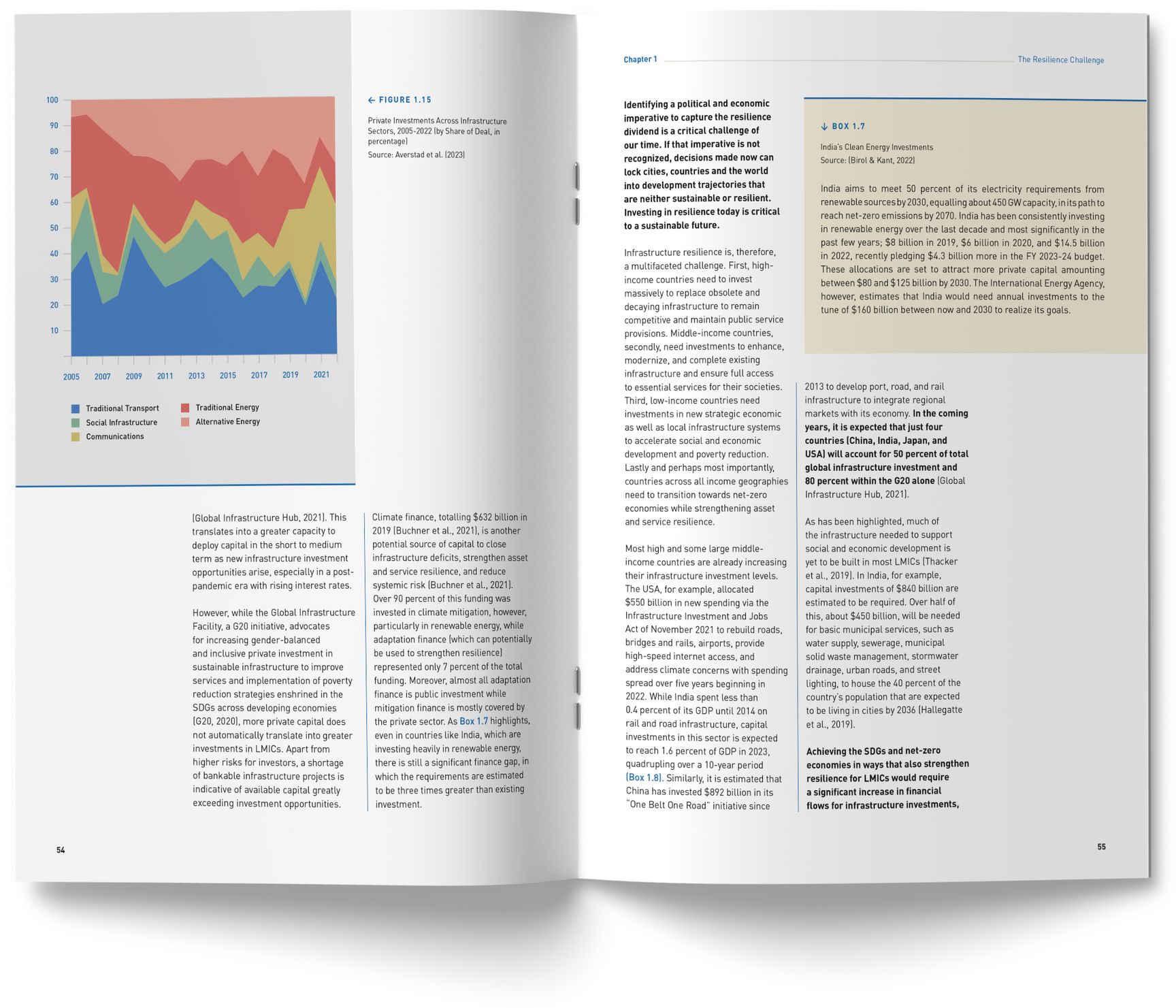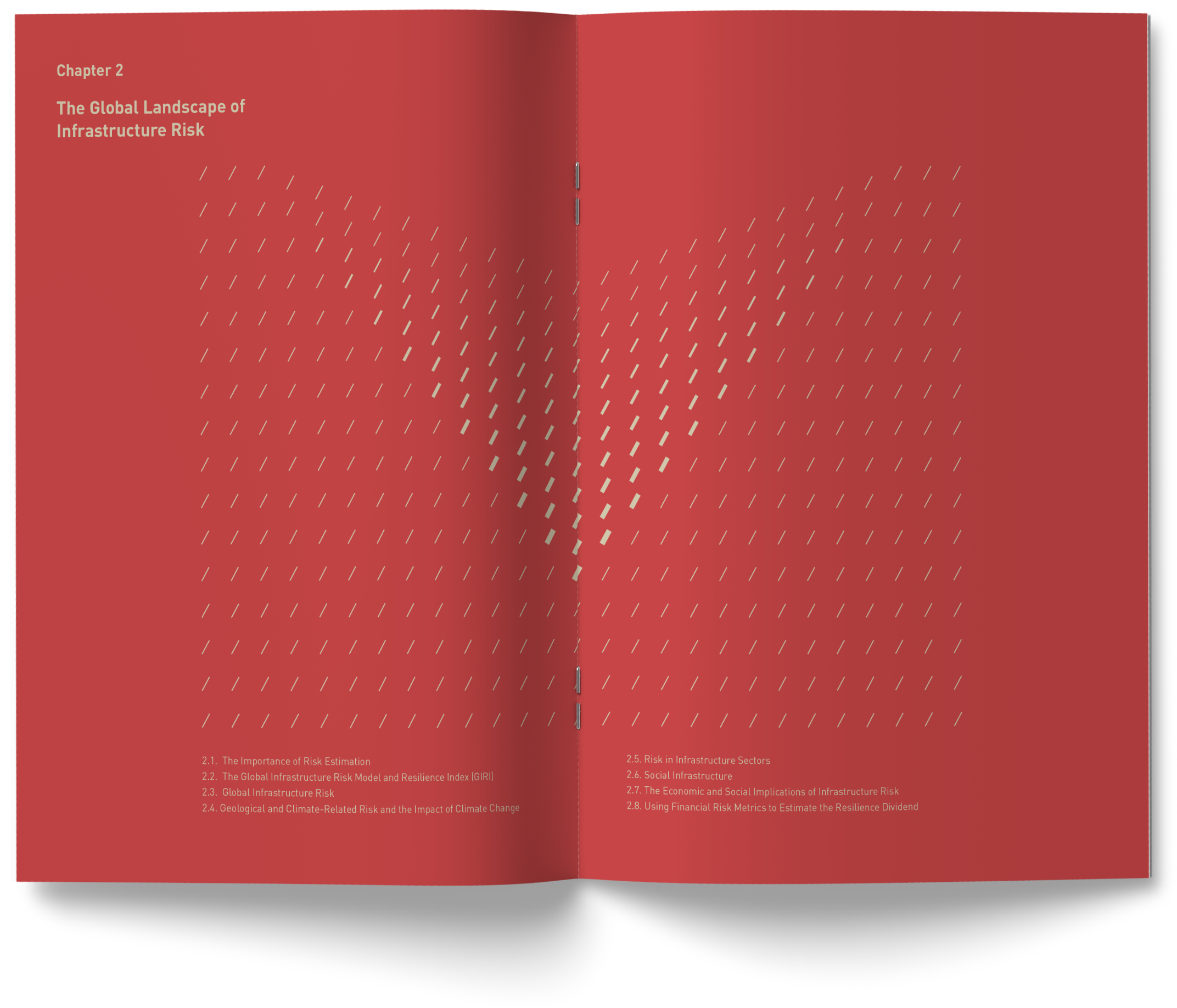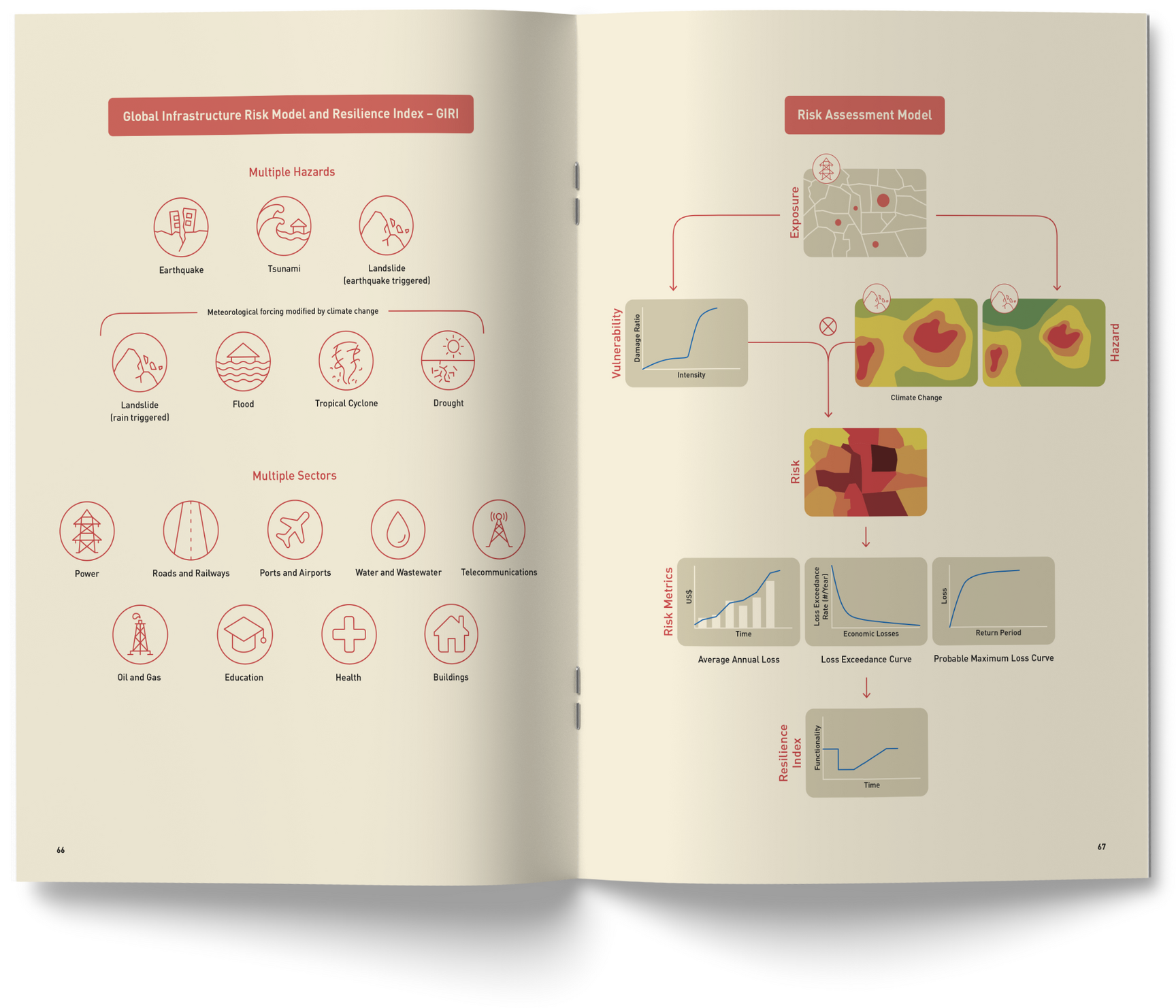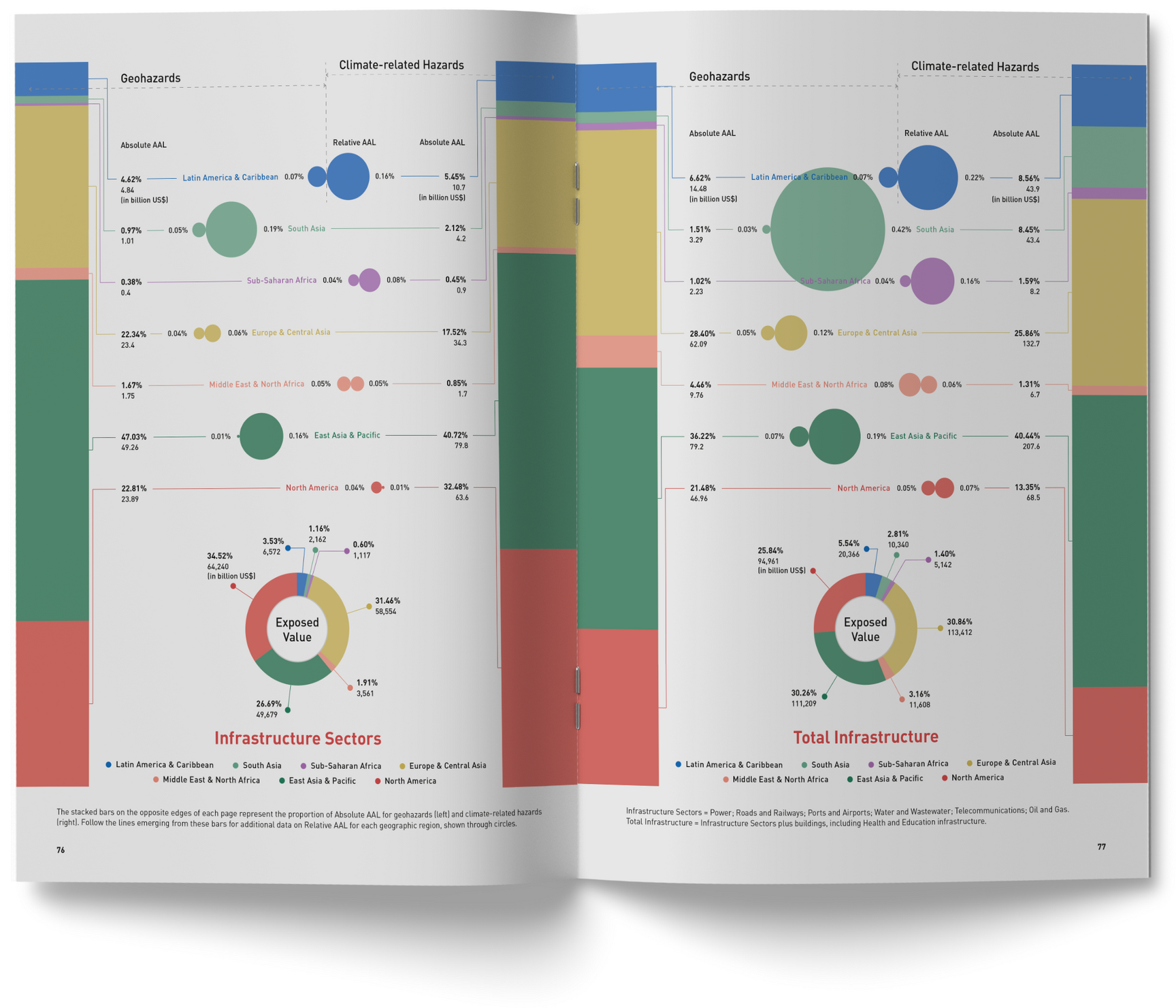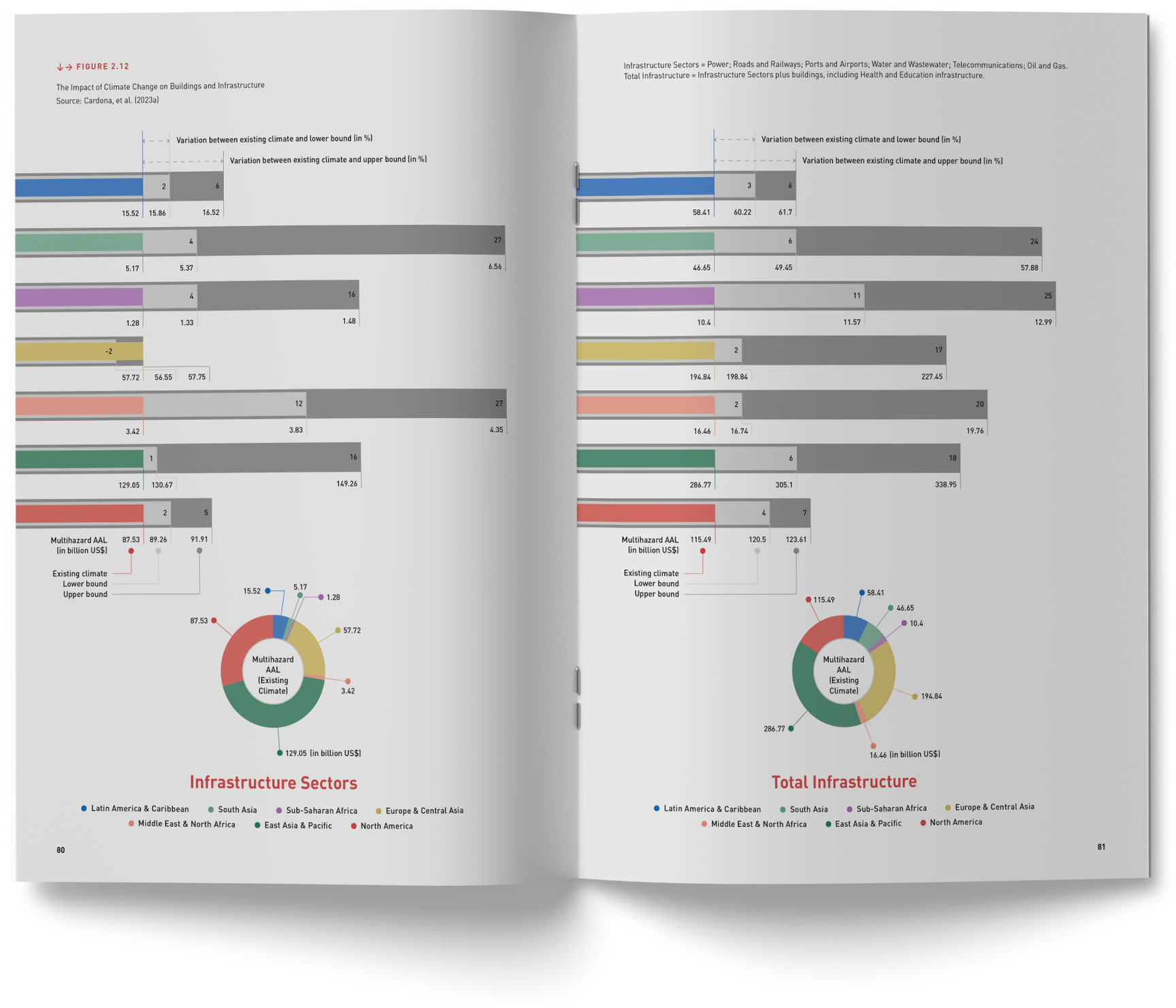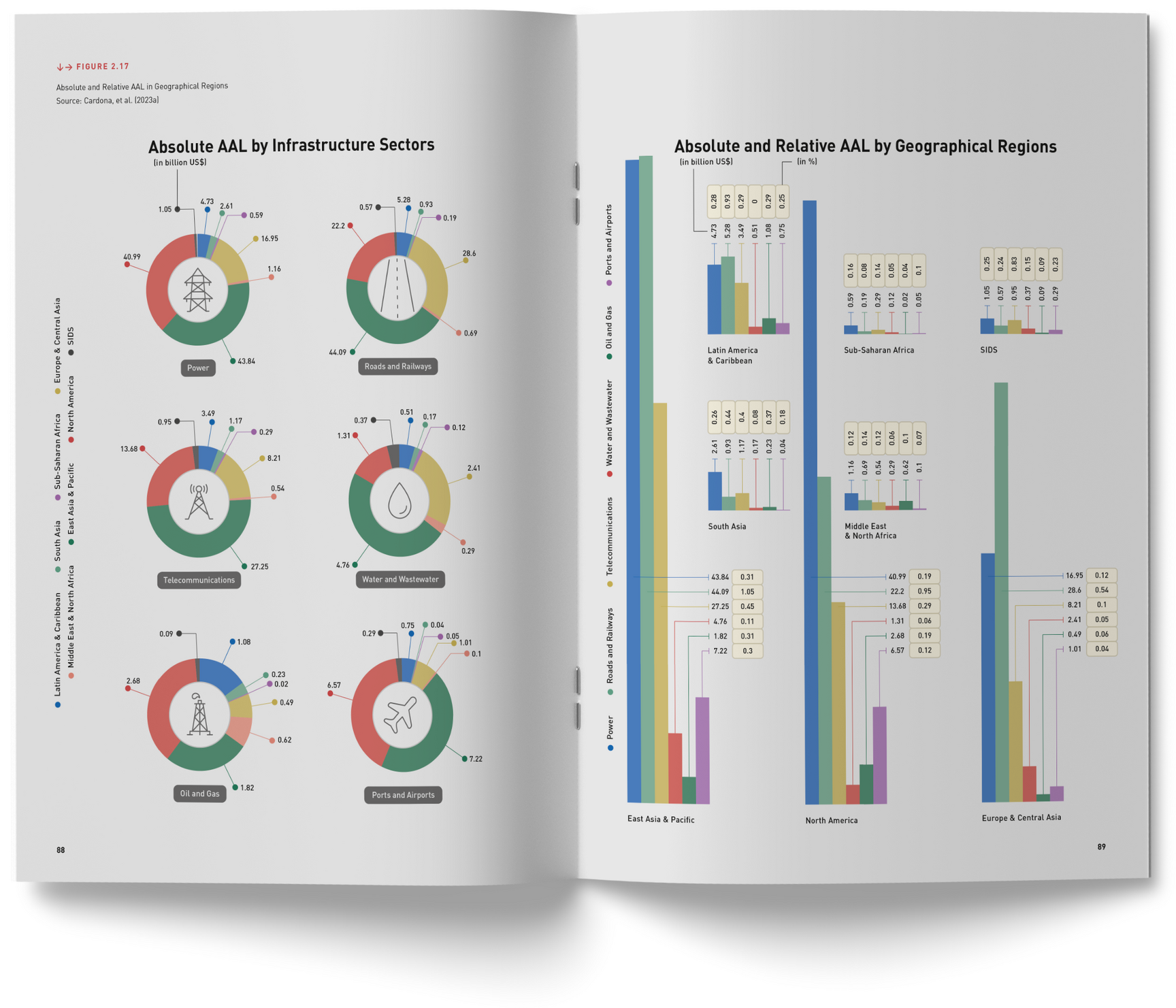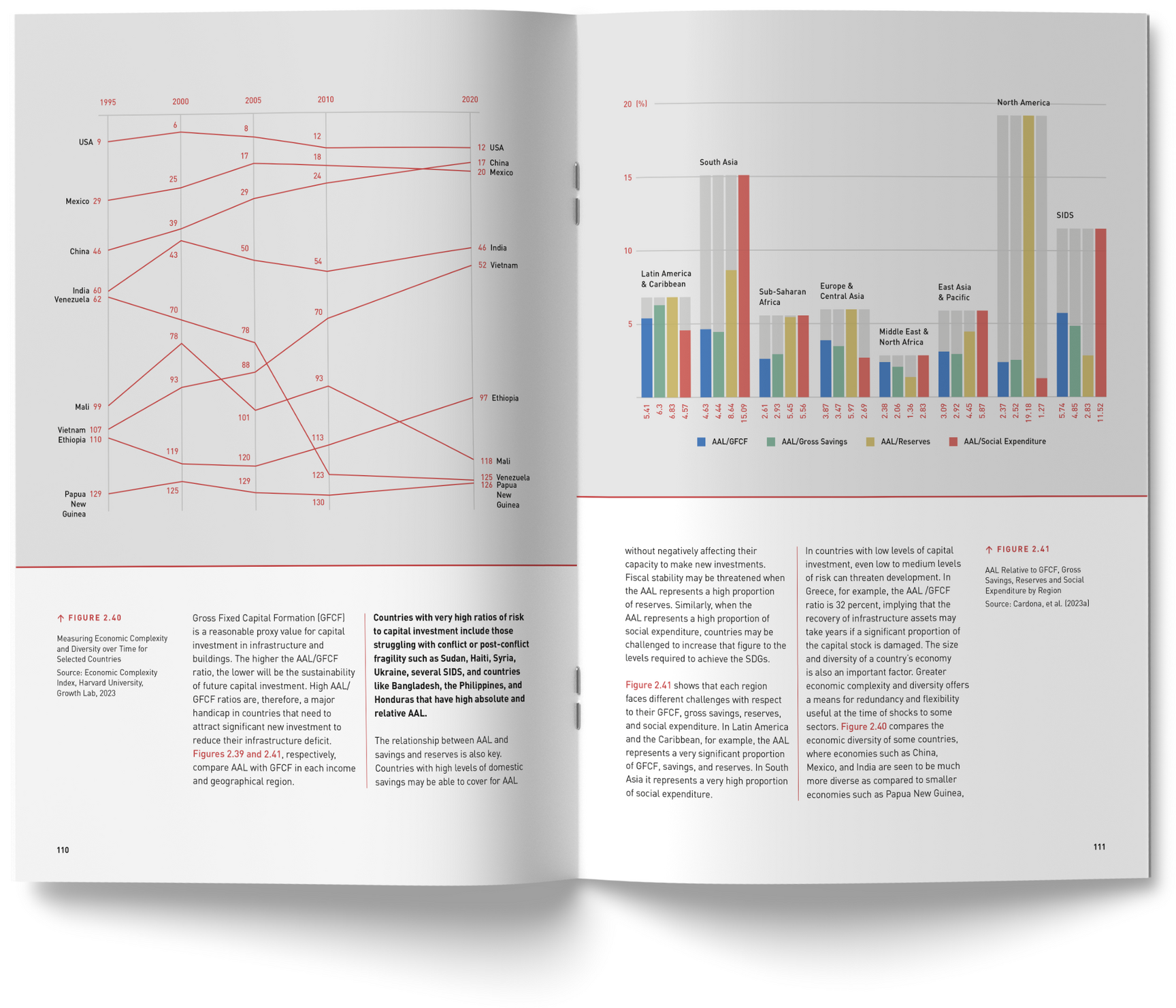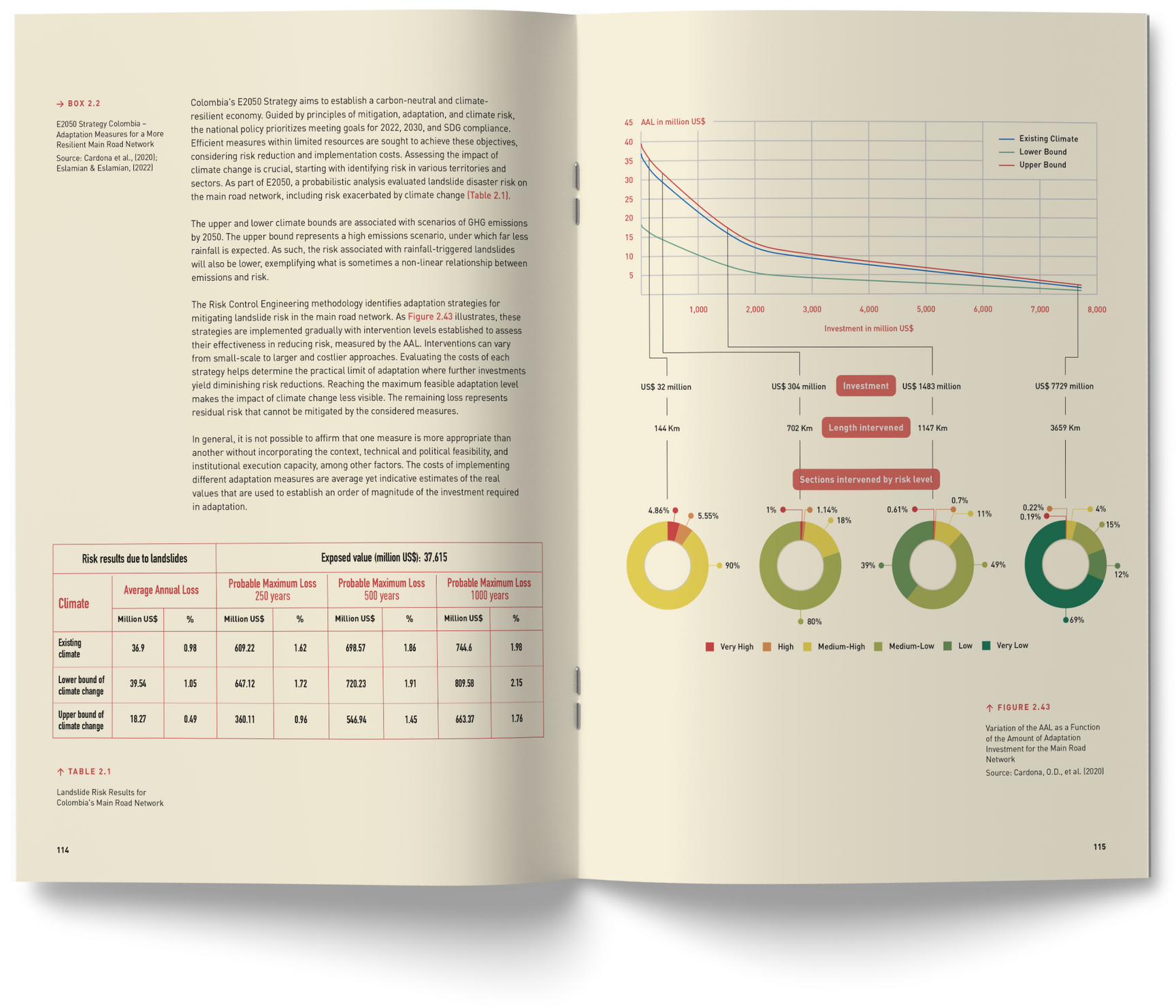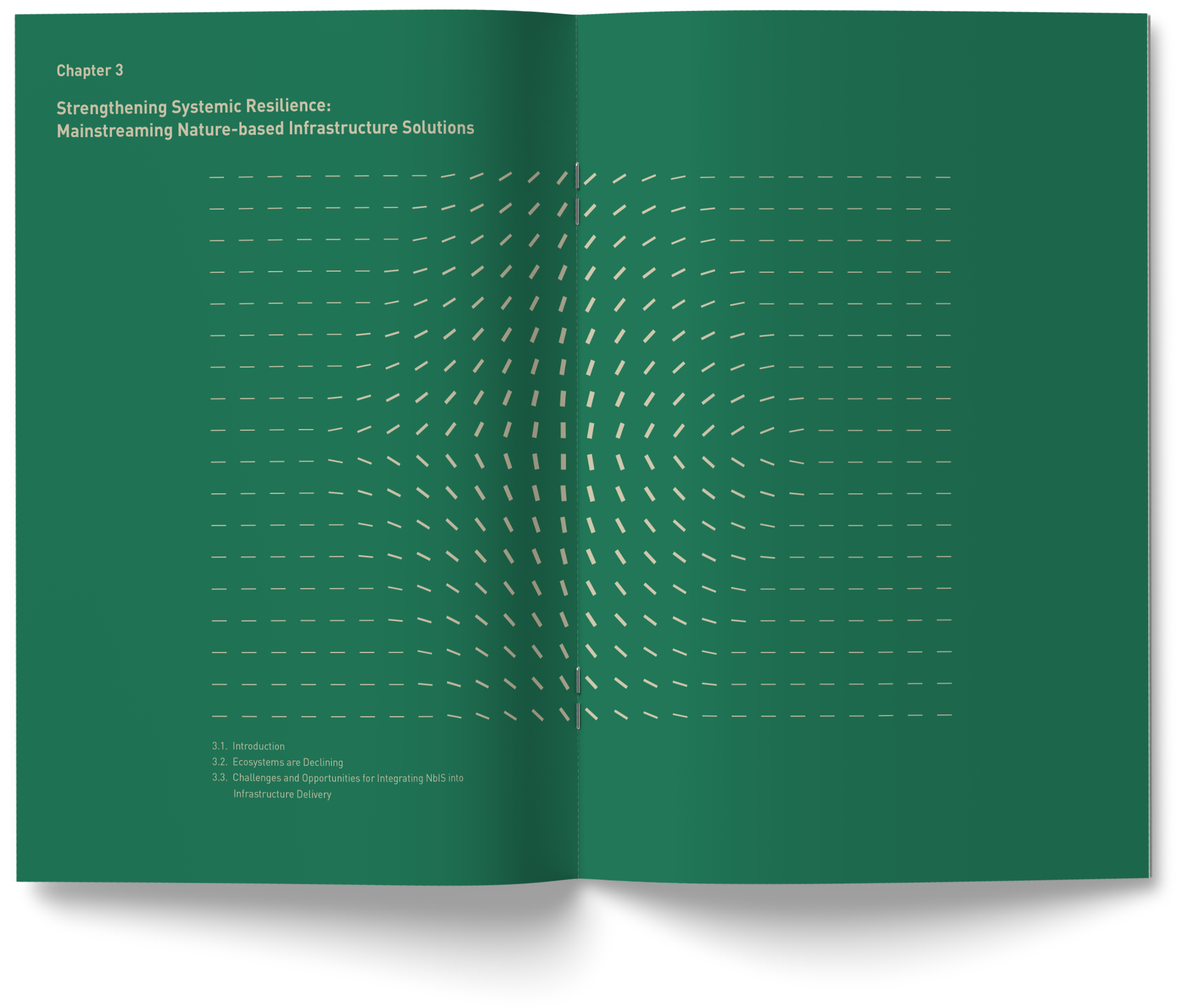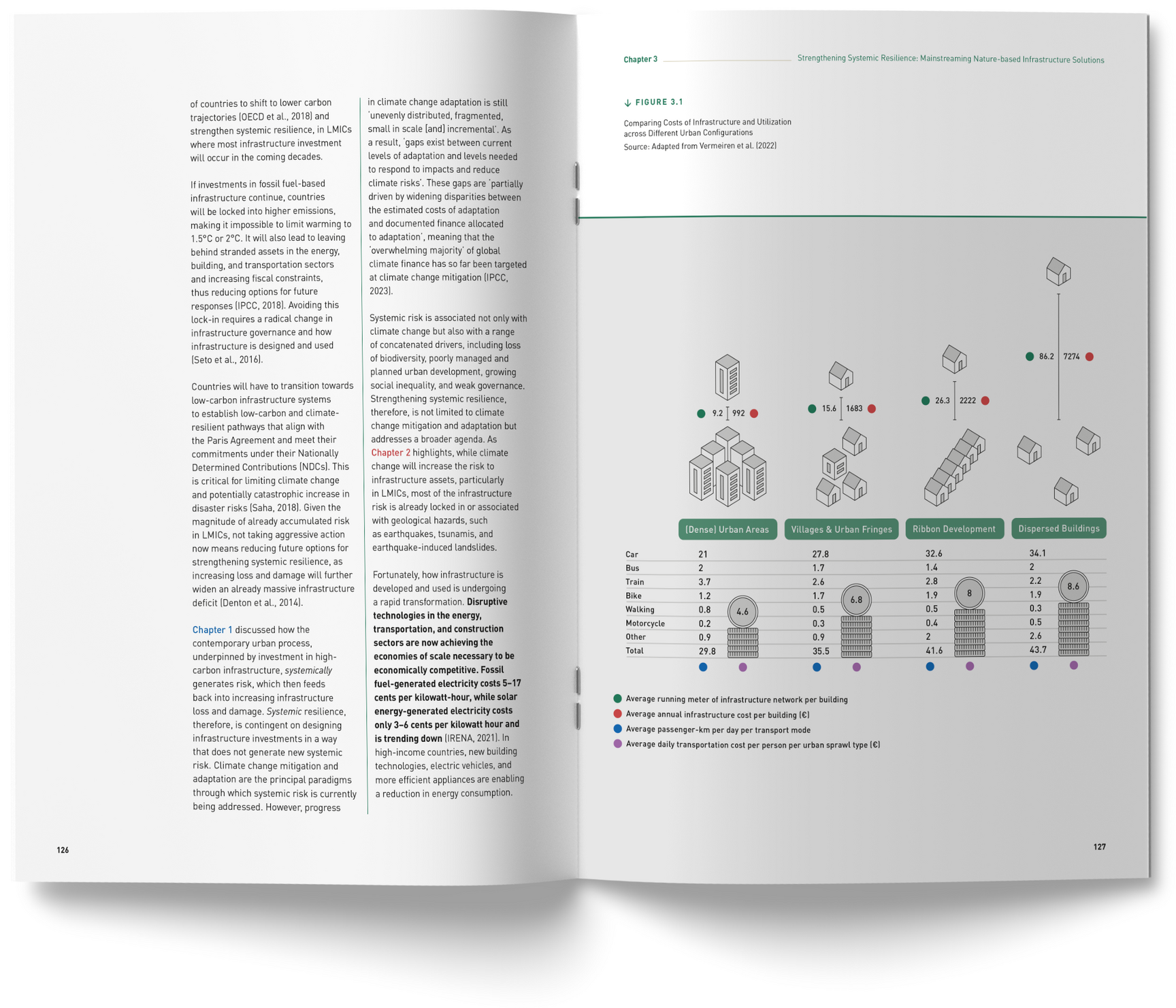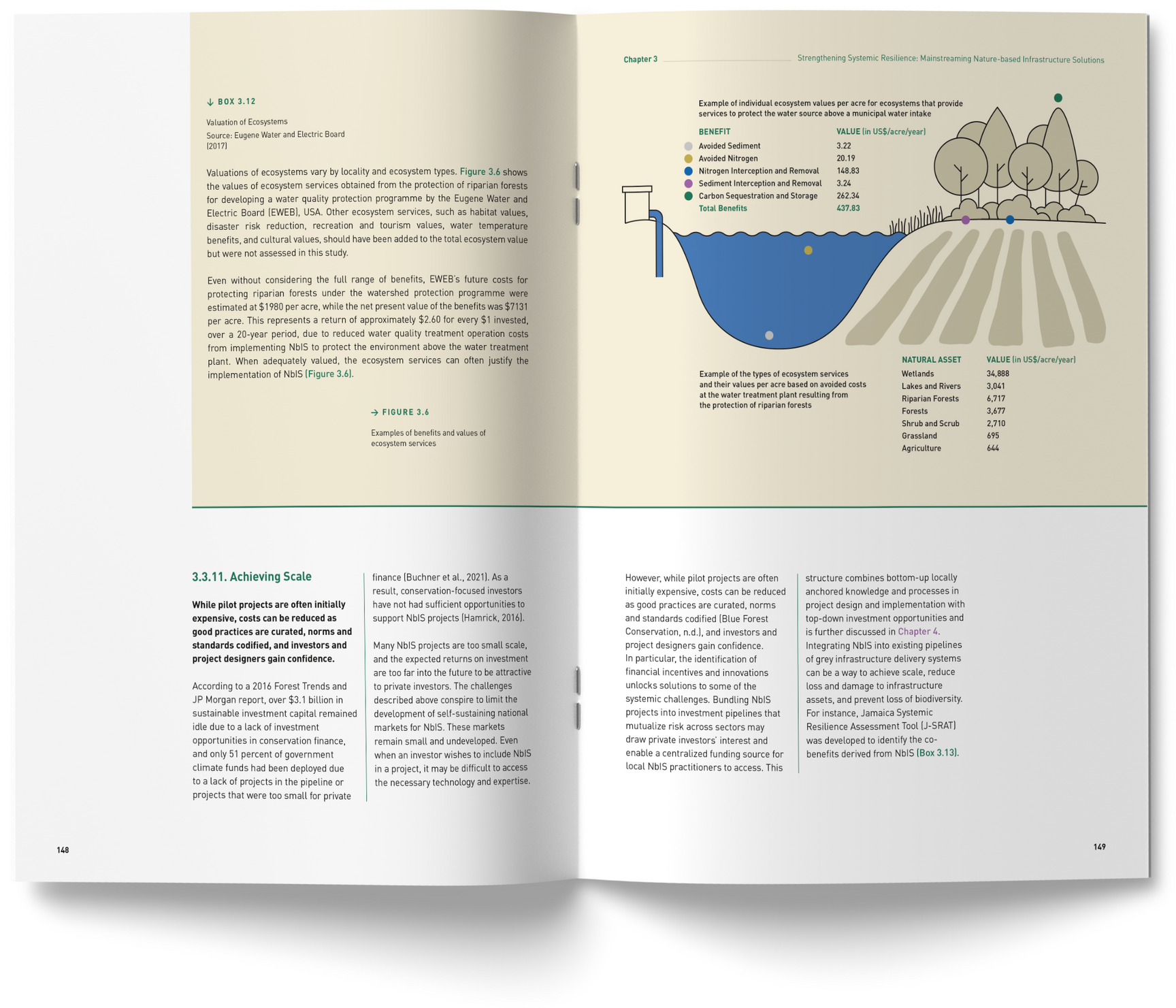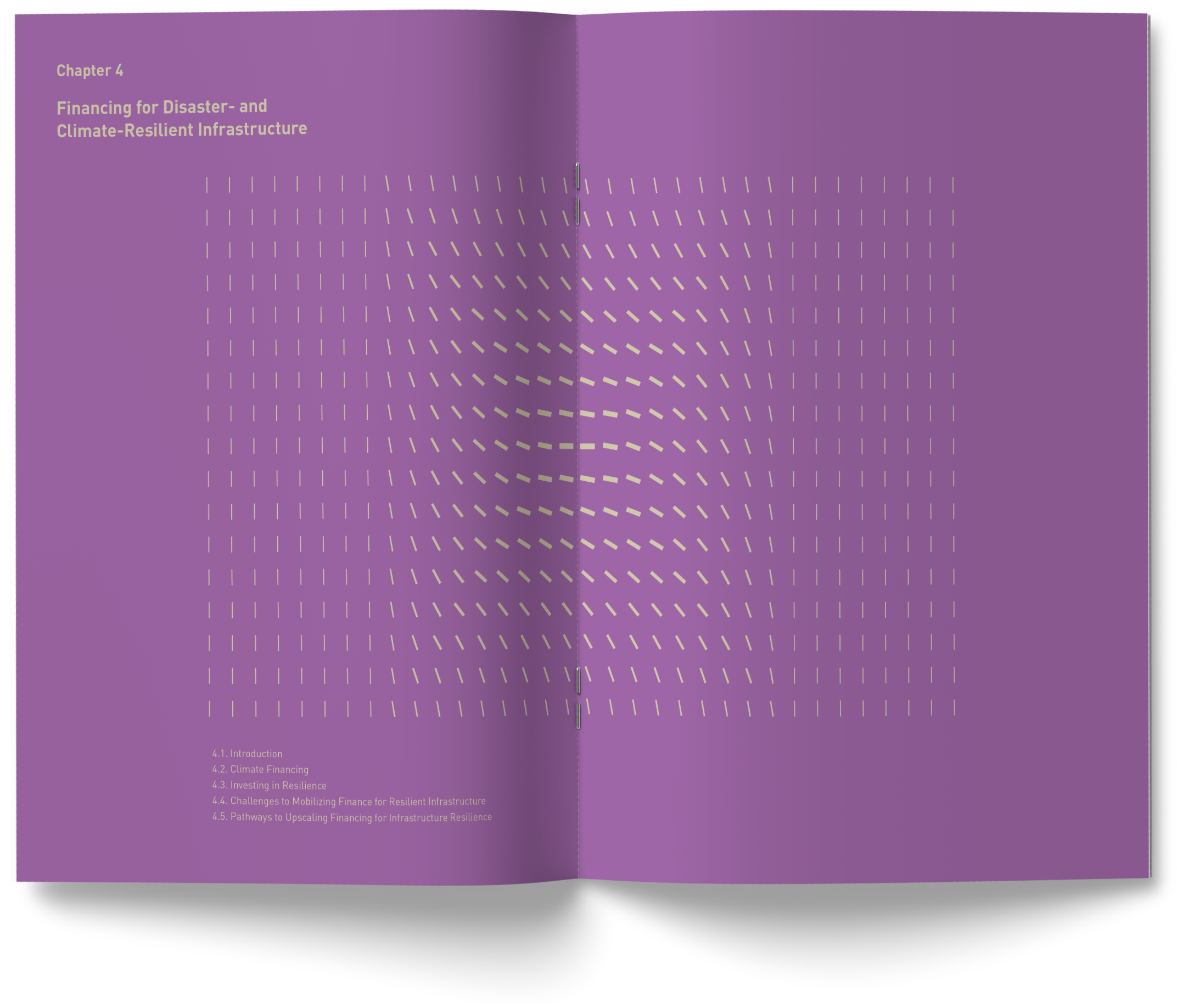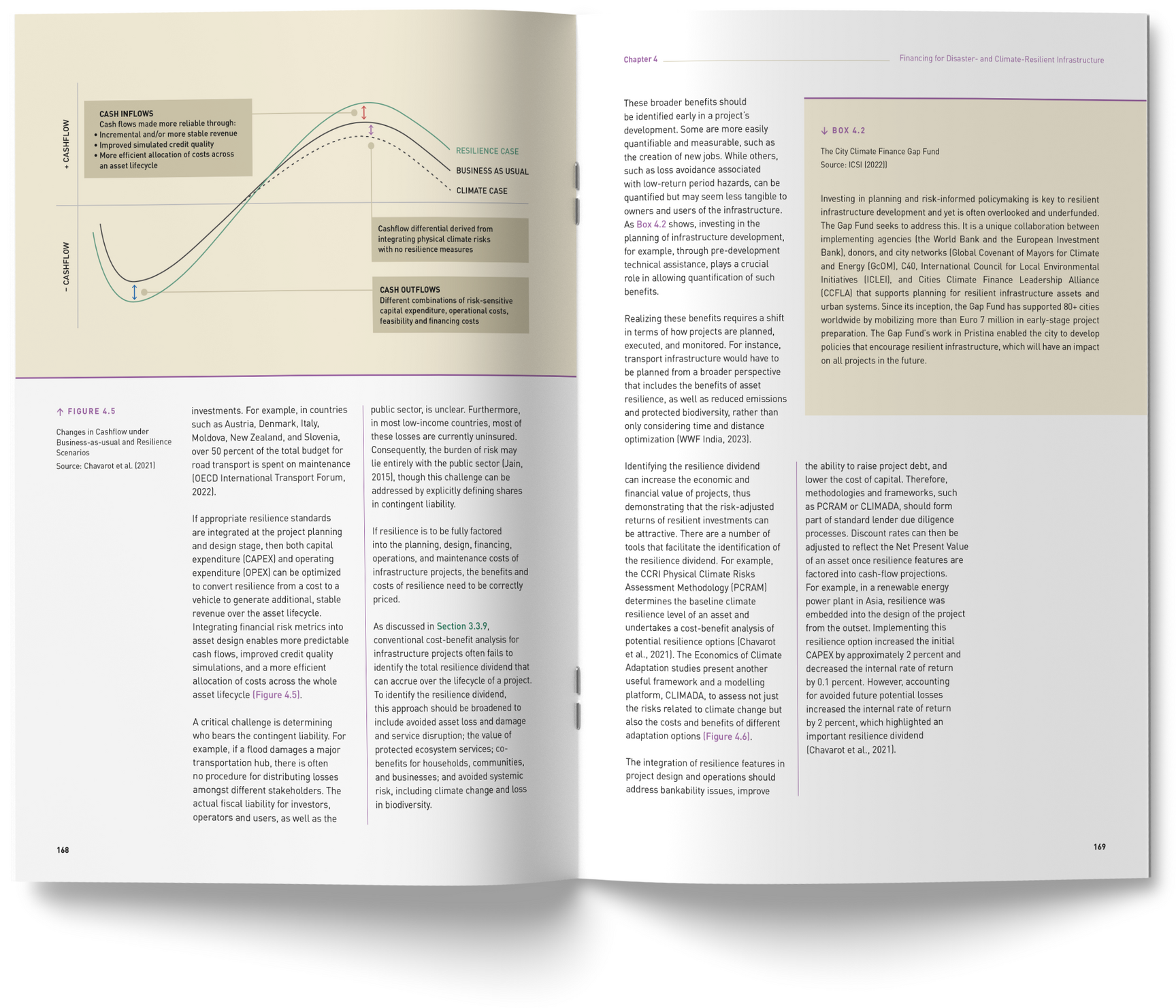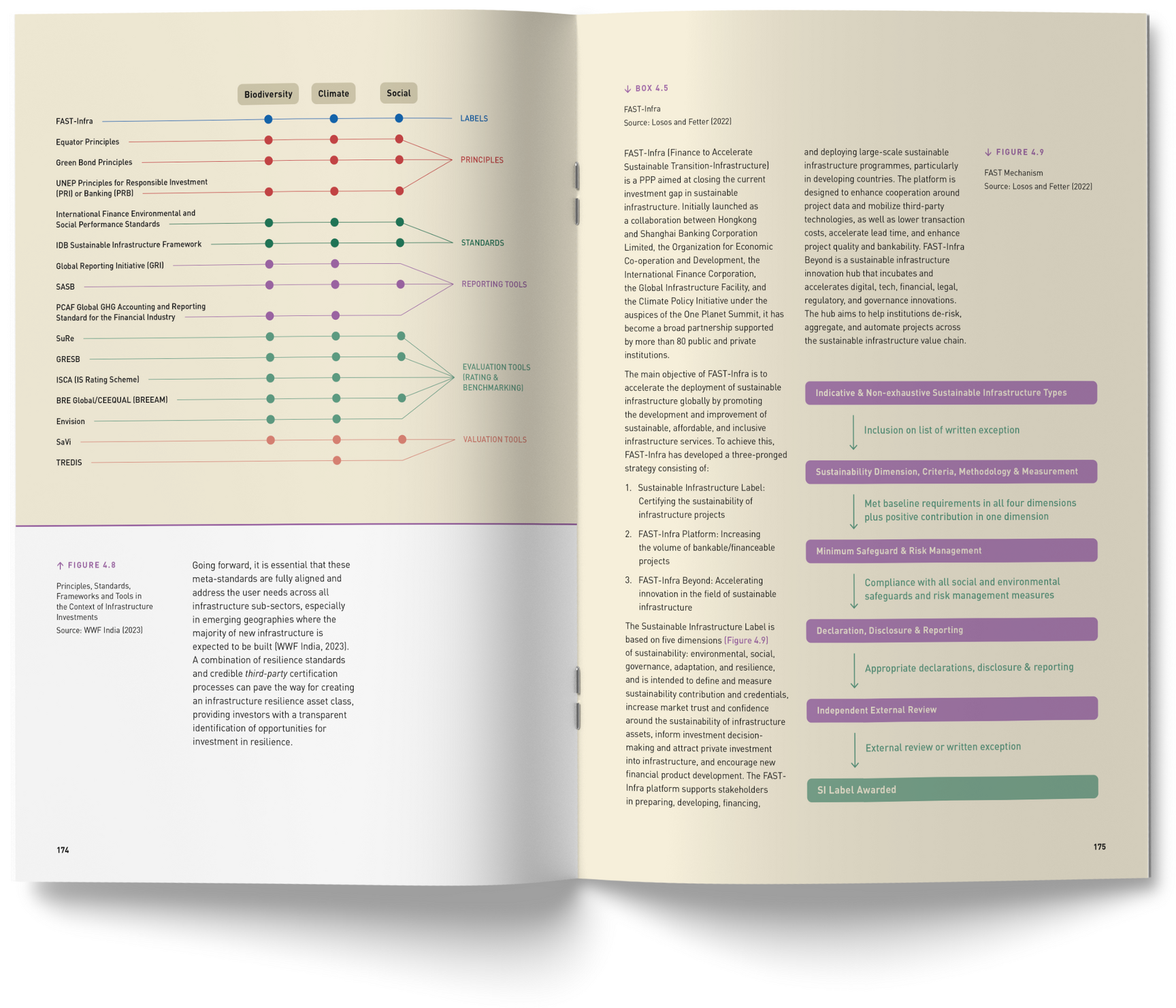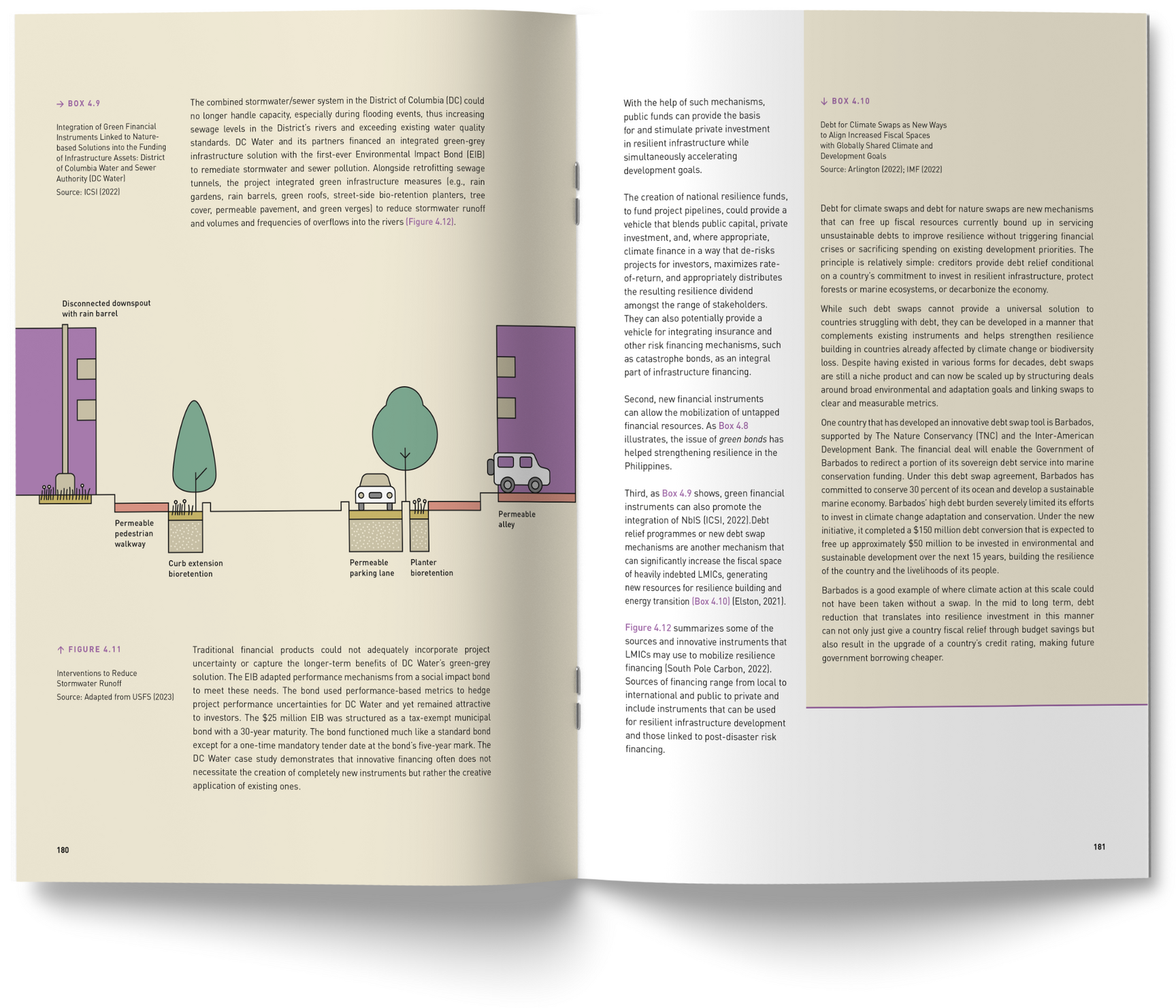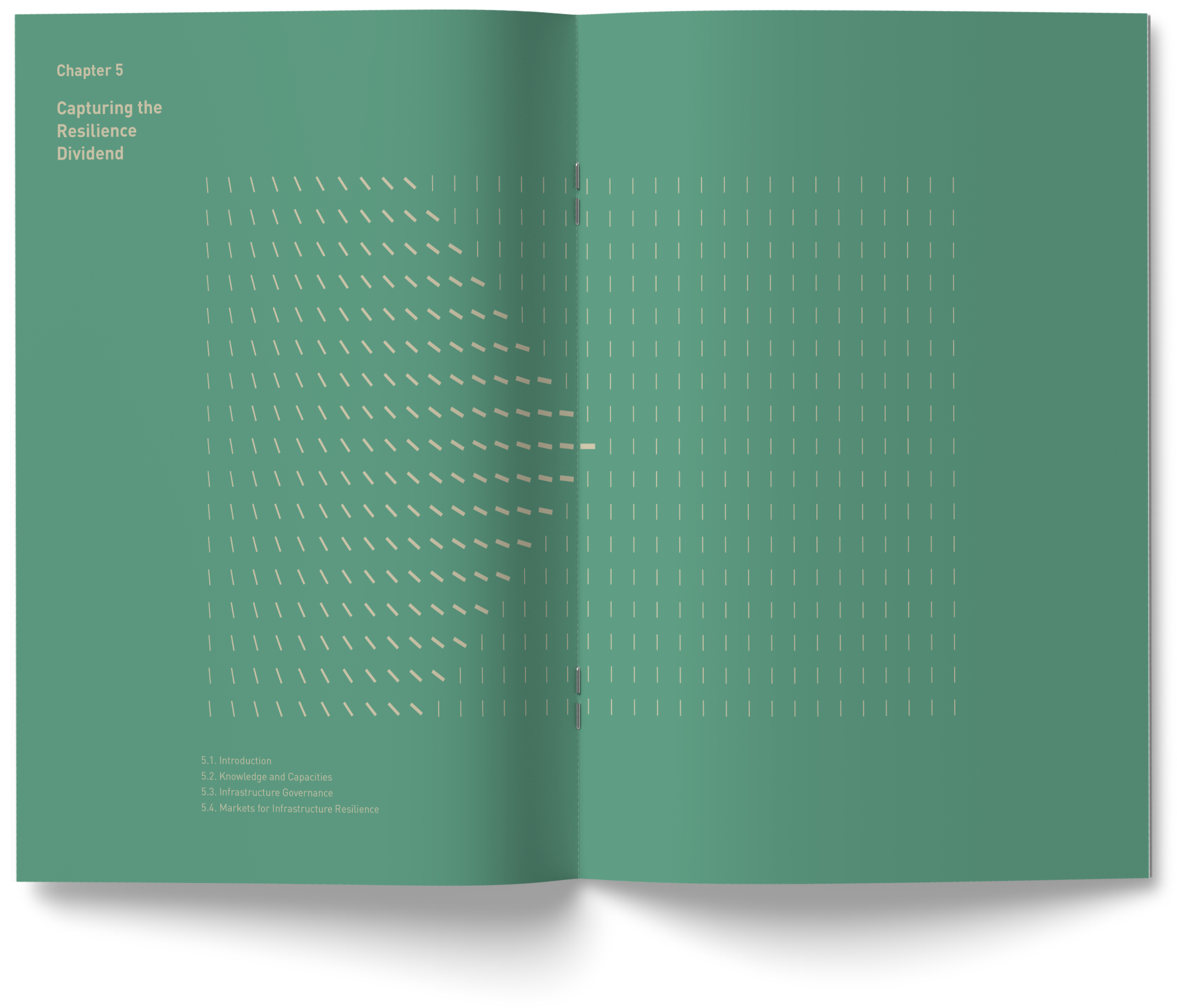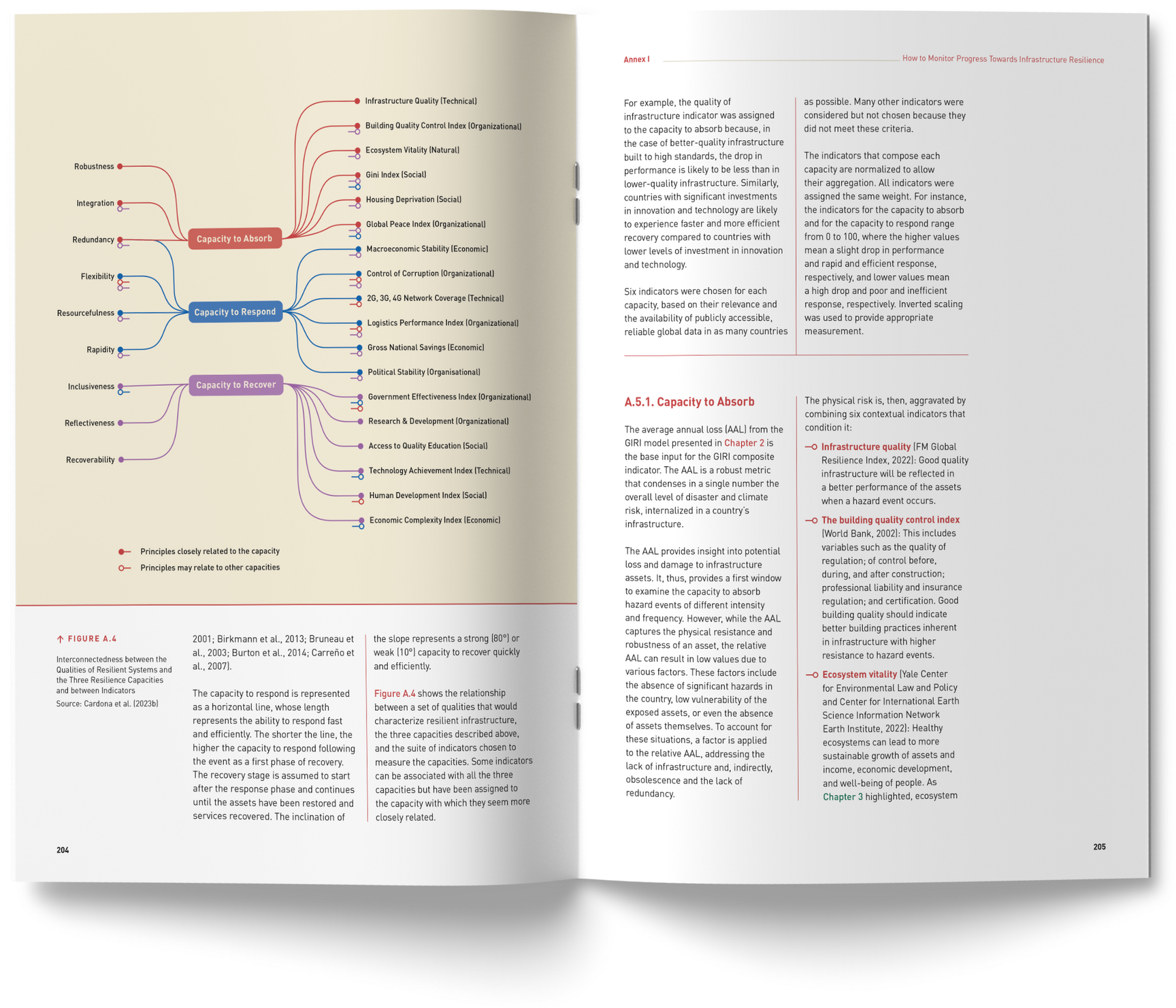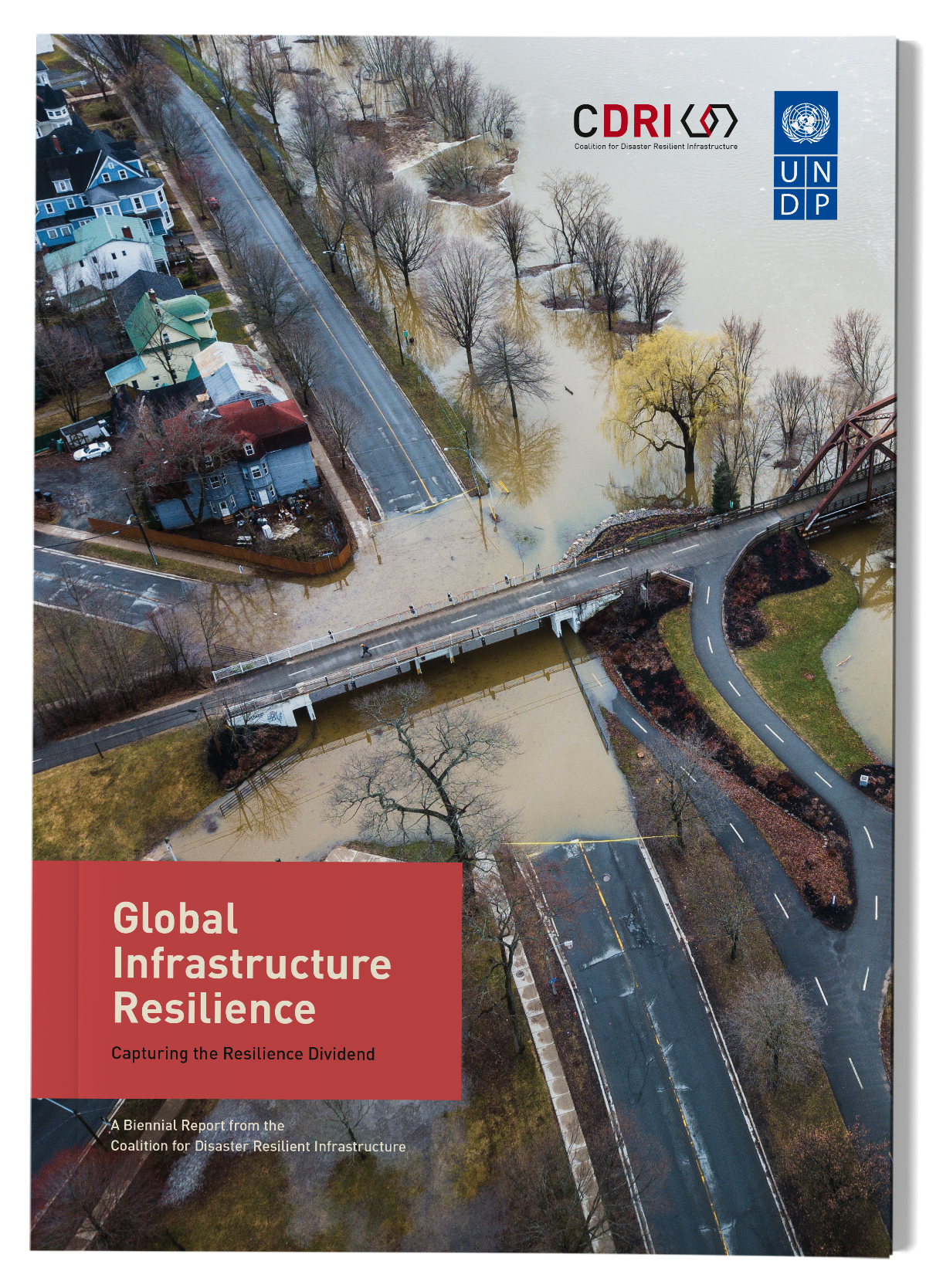
Report Design on Disaster Resilient Infrastructure
Tiffinbox was tasked to design the first edition of the CDRI report on Global Infrastructure Resilience. The Biennial Report presents a compelling economic, financial and political imperative for investing in infrastructure resilience, based on a new cutting-edge Global Infrastructure Risk Model and Resilience Index (GIRI). GIRI is the first-ever fully probabilistic global risk assessment of infrastructure assets in all sectors (power and energy, transport, telecommunications, water and wastewater, ports and airports, oil and gas, health and education). The GIRI estimates the growing risks to infrastructure from major hazards (such as earthquakes, tsunamis, landslides, floods, cyclones, storm surges and drought) and generates financial risk metrics which can enable governments, financial institutions, and investors to better understand the contingent liabilities for which they are responsible.
The 240-page report is split into five chapters that begin with a look into the challenges of infrastructure resilience, followed by a very detailed explanation of GIRI, before moving on to nature-based solutions, financing, and ending with the way forward. The visual drivers of the report are over 90 figures, ranging from small icons to full spread infographics depicting complex data, that were developed in close coordination with the drafting team. Our work on the report was initiated during a two-day workshop held in Delhi with the authors, cartographers and other stakeholders and was completed over a period of three months.
While infrastructure is structured and tangible, disasters are neither. All sectors of infrastructure exist to bring a certain level of safety and predictability to human lives but disasters on the other hand are abstract and cause losses in their aftermath. We are dealing here with two opposing forces of infrastructure and disasters.
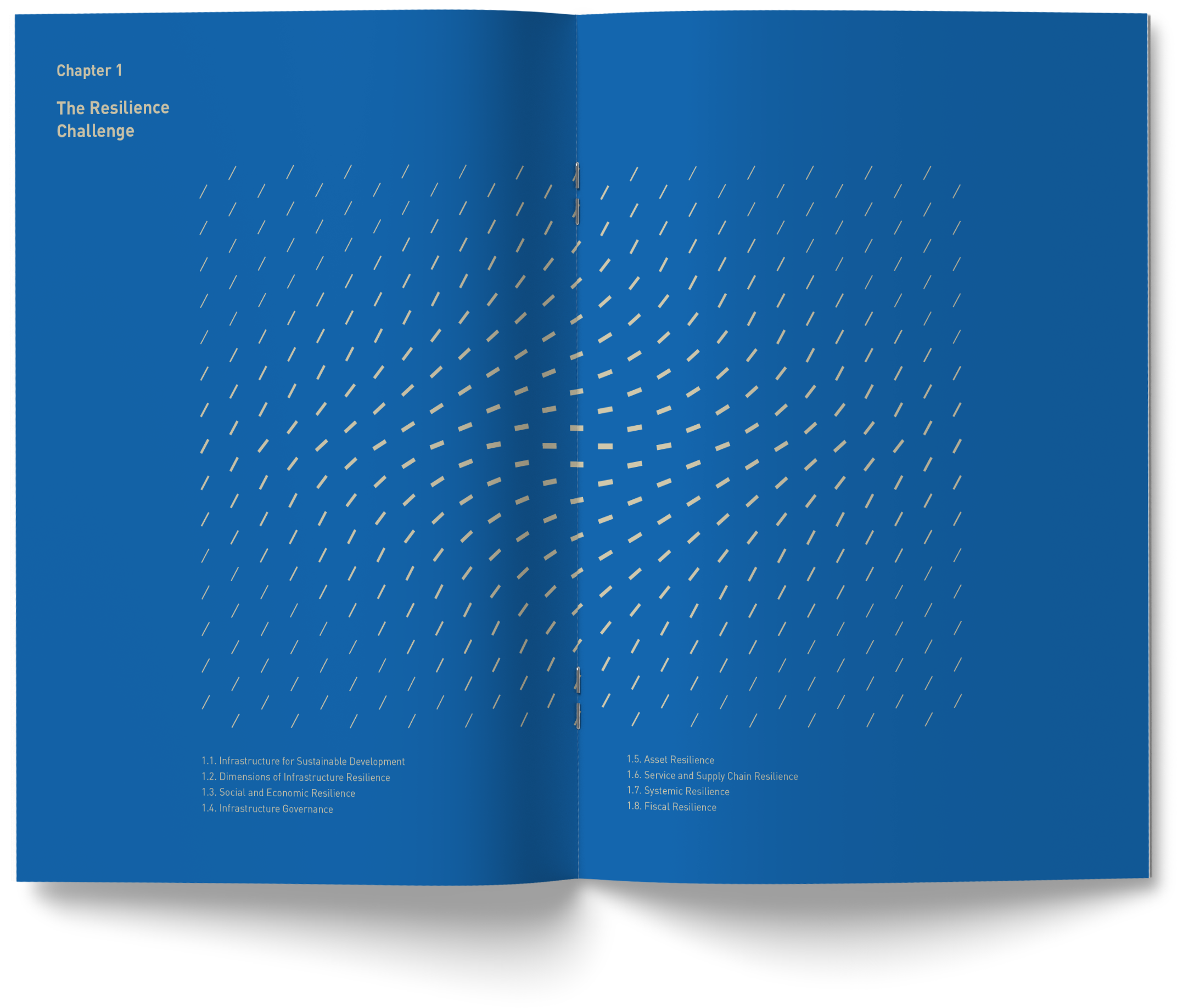
A grid of lines— horizontal, vertical, diagonal— which are also the constituent parts of the CDRI logo’s hexagon helps bridge the gap between infrastructure and disaster. These lines when seen in a systematic, repeating and predictable way depict infrastructure. But an unexpected change in their directions or angles or character portrays the disruptive force of disasters. It is through the interaction of these two that we have tried to bring forth the idea of resilience and its aspects of anticipate, absorb & adapt, respond & recover.


